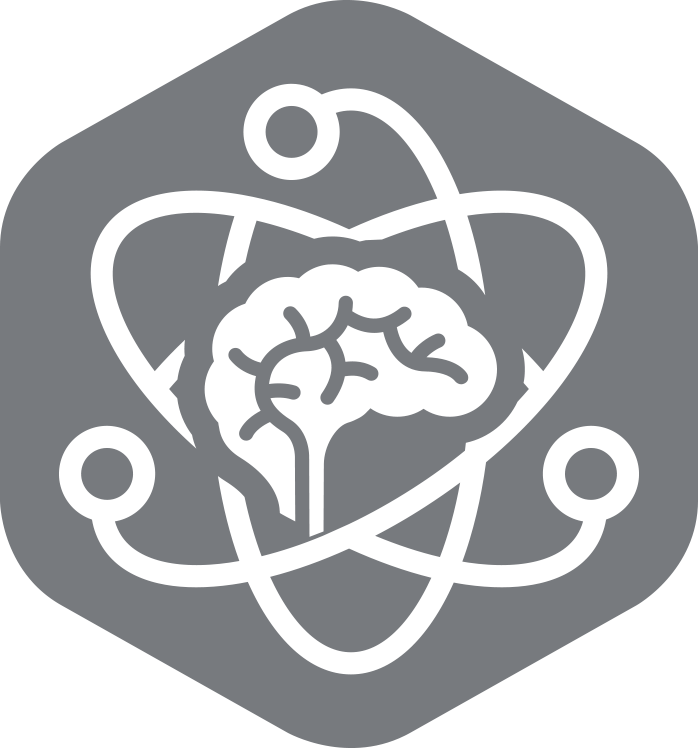
THEMES AND TRACKS
Themes
The conference Themes, as selected by the Scientific Committee, highlight some important areas for the future of Forensic Science. The Themes have served as a compass in the development of the scientific program. It is our ambition that EAFS 2022 will contribute to further develop these areas.
We have offered the authors of abstracts for EAFS 2022 to, if they so wish, indicate one or more themes that they consider to be linked to their contribution. As many of our authors have chosen to exercise this opportunity we encourage everyone to explore areas outside of their field of expertise with help of the theme symbols displayed for each abstract.

Digital Transformation of the Forensic Process
Learn More
New digitalized products and services are entering our society in many ways as new technologies and innovations become available at an increasing rate. The digital transformation itself is not new, but the effects and impact of the transformation are continuously finding themselves into new areas. It is not only about technology, the transformation also involves people, workflow, judicial and ethical considerations etc.
In the field of Forensic Science, we now have the opportunity to improve our way of working by harvesting the benefits from the digital transformation. The question is, how do we accomplish this in a way that will fit the forensic processes and workflows? How do we bring all colleagues on board? And, how do we make sure that we maintain quality and a scientific approach within our forensic processes?

Forensic Data Science
Learn More
Data Science is an interdisciplinary field that combines the use of mathematical methods, data and expert knowledge. It is a fundamental part of Forensic Science as a tool for the evaluation of evidence and to communicate the findings. The increased capabilities to capture, store, share and process data, propelled by the development of Artificial Intelligence and Big Data, are enabling Forensic Scientists to automate and address more complex problems. There is no field within Forensic Science that will not experience the impact of this development.
What are the future opportunities in Forensic Data Science? How do we share data and knowledge in order to benefit from these opportunities?

Forensic Human Factor
Learn More
A fundamental aspect of Forensic Science is the evidence-based approach to the treatment and evaluation of forensic findings. In order to make the forensic outcomes as indisputable and inarguable as possible, there needs to be a common understanding among experts and scientists of the scientific principles upon which our conclusions are based.
From recovery processes, hypothesis generation, context information management, calibration of the human-based interpretation to the presentation of results in a scientifically correct, understandable and unbiased way, the impact of human factors within forensic science is essential and unavoidable.

Forensic Social Responsibility
Learn More
Forensic Science has an important role in our judicial systems. Our environment and our capabilities are affected not only by technological advancements and laws, but also by ethics and societal perceptions. In many situations technology or science itself is not a limiting factor. Balancing concepts such as personal integrity and technical capabilities is becoming increasingly important.
The challenge of balancing the need for efficient Forensic Science services to the judicial system while maintaining and assuring quality and future-proofing is a question that many Forensic Science laboratories faces. How we manage this delicate balancing act will be important for how Forensic Science develops in the future.

Forensic Technology Innovation
Learn More
Forensic Science spans across a broad range of areas, each with constant development of new technologies and solutions. Many of these achievements have the potential to become valuable tools in the hands of Forensic Scientists. But how do we work actively with innovation to make sure that new technologies are made available in Forensic Science? What are the areas with the largest potential impact? How can we ensure an efficient innovation uptake?
These are questions that will need to be addressed within the Forensic Science community in order to stay relevant and continue to support the judicial system.
Tracks
Selected by the EAFS 2022 Scientific Committee the conference tracks are selected to cover the field of Forensic Science covered by the ENFSI Expert Working Gropes (EWG). The ambition is to help attendees at EAFS 2022 find the sessions that match their areas of interest and navigate the conference. For some of our tracks the sub-tracks will provide further guidance to specific fields.
Code
Chemistry
Chair: Professor Arian van Asten Co-chair: Associate Professor Simon Dunne
MFS / CLHC, Univ. of Amsterdam, The Netherlands NFC, Sweden
Routed in a single science domain the actual application of chemistry in a forensic setting is very diverse. Various forensic expertise areas focus on the criminal misuse of chemical knowledge and products (drugs, explosives and ignitable liquids and fire debris analysis). Other forensic experts specialize in the chemical characterization of microtraces such as fibers, glass, paint and gunshot residues that are often generated and exchanged during incidents and can constitute important evidence linking individuals to crime scenes and criminal activities. Finally, chemistry is applied in the laboratory to assist the forensic investigation, for instance to visualize latent traces such as fingermarks. At EAFS 2022 the Chemistry sub-tracks have been defined according to forensic area, reflecting how chemistry expertise is typically organized in forensic institutes.
Sub-tracks:
- Drugs
- Environment
- Explosives
- Fingermark Development
- Gunshot Residues (GSR)
- Ignitable Liquids and Fire Debris Analysis
- Material (Paint and Glass/Textile and Hair)
- Trace, Transfer and Persistence
Digital Evidence
Chair: Professor Zeno Geradts Co-chair: Philip Engström
NFI / Univ. of Amsterdam, The Netherlands NFC, Sweden
This Track focuses on all kinds of digital evidence, ranging from any kind of computer system, digital imaging, forensic visualizations as well as using artificial intelligence. The rate of change is high in this field since new devices are being developed with ever increasing tempo. This also creates a challenge to implement quality assurance since the amount of data generated is growing rapidly and millions of apps are developed in many versions. At the same time explainability in court is always a factor that needs to be considered.
Sub-tracks:
- Artificial Intelligence
Any form of artificial intelligence used in digital forensics, including topics such as bias and explainability as well as ethical implications, big data analysis and use of systems for analysis of huge amounts of data – implemented in a reliable and valid way for forensic purposes. - Computer, Cybercrime, Malware and Database Forensics
The wide range of computer and database forensics as well as forensic investigation of malware and ransomware attacks. The sub-track also includes other forms of cybercrime such as anti-forensic software and decryption and data hiding. - Digital Imaging
Any form of forensic digital imaging, such as manipulation detection, interpretation, video recovery, comparison and camera identification. - Forensic Visualization (VR, AR, 3D)
The use of technologies, such as virtual reality and augmented reality glasses, for 3D visualizations, e.g. as a tool for investigation or presentation in court. - Mobile Device, Network and Location Forensics
Examination of smartphones, other mobile and IoT devices, as well as the analysis of networks and related services. - Vehicle Forensics
The number of on-board systems and sensors in cars is rapidly expanding and information can be extracted from those for use, e.g. as evidence in Court.
DNA/Forensic Genetics
Chair: Dr. John Butler Co-chair: Associate Professor Ricky Ansell
NIST, US NFC / Linköping Univ., Sweden
The field of forensic biology and genetic profiling, including the analysis of human and non-human nucleic acids (DNA/RNA).
Sub-tracks:
- Body Fluids
Search, recovery, characterisation, transfer and persistence of stains and cellular material (for subsequent nucleic acid analysis) - Disaster Victim Identification (DVI)
Aspects of genetic profiling as a tool for disaster victim identification - Evaluative DNA
Interpretation and evidentiary strength of DNA or RNA findings including statistics, mixture interpretation, and activity level propositions
Investigative DNA
Generating intelligence and investigative leads, including phenotyping & ancestry, investigative genetic genealogy, familial searches, and databasesx
Forensic Medicine and Toxicology
Chair: Professor Bela Kubat Co-chair: Associate Professor Martin Josefsson
Maastricht Univ. / NFI, The Netherlands NFC / Linköping Univ., Sweden
Forensic medical science can both contribute to and profit from the extensive knowledge in other forensic fields presented at this conference. In particular, in the much-discussed fields of physical child abuse or death in custody, novel psychoactive substances, human performance substances, forensic neuropathology, age estimation of injuries or innovative in vitro and in vivo models for predictions of drug action and toxicity, forensic medicine and toxicology play a key role.
Marks, Impressions and Biometric Traces
Chair: Professor Christophe Champod Co-chair: Professor Didier Meuwly
UNIL, Switzerland NFI/ Univ. of Twente, The Netherlands
This Track focuses on the forensic examination of all types of marks and impressions (e.g. firearms, tools footwear, garment and documents) and all types of biometric traces (e.g. friction ridge skin, face, speech, body, gait, handwriting and signature). Particular emphasis will be placed upon examiner-based and automatic approaches, reporting on the source and activity level inference and reporting on the intelligence, investigative and evaluative phase of the forensic process, together with multidisciplinary topics such as the combination of biometric traces or the combination of toolmarks and biological traces.
Sub-tracks:
- Body and Gait
- Document, Handwriting and Signature
- Face Recognition
- Firearms and Tools
- Footwear and Garment
- Friction Ridge Skin
- Speaker Recognition
Scene of Crime
Chair: Professor Niamh Nic Daeid Co-chair: Mike Groen
LRCFS, Univ. of Dundee, UK NFI / Leiden Univ., The Netherlands
There are many competing priorities that crime scene investigators and forensic experts attending crime scenes must address including enabling a scientific approach to the scene investigation that maintains quality so that a reconstruction that is valid in science can be developed for the courts; ensuring that new technologies are implemented in a reliable and valid way; ensuring that technology and methods of practice used in crime scene training or competency testing are fit for purpose; understanding the impact of the developing digital technologies on crime scene investigation and its practitioners and understanding how crime scene examiners make decisions at crime scenes.
Sub-tracks:
- Bloodstain Pattern Analysis
New developments in the recording and interpretation of blood pattern analysis - Capturing the Crime Scene
New and emerging technologies used to capture the crime scene, e.g. laser scanning, hyperspectral cameras or other type of sensors. - Complex Scenes
Scientifically based investigations of complex scenes, for example DVI scenes or CBRN scenes. - Fire and Explosion Investigation
Recent developments in practices of fire and explosion scene investigations. - Forensic Archaeology and Anthropology
Recent developments in the use of forensic anthropology and archaeology in scene investigations. - Implementing new technologies at crime scenes
How are new technologies introduced safely to crime scene investigations so as to be accepted in the Courts? - Trace Evidence and Interpretation
The detection, recovery, analysis and interpretation (including transfer, persistence, recovery and background abundance) of trace evidence and their relevance to the reconstruction of an alleged crime. - Training and Education for Crime Scene Investigators
Ensuring that training, education and competency testing is fit for purpose, fills the gaps and is educationally valid.
Forensic Management
Chair: Distinguished Professor Claude Roux Co-chair: Honorary Professor Sheila Willis
UTS, Australia LRCFS, Univ. of Dundee, UK
In recent years there is a trend for forensic science managers to be professional managers who may have little knowledge of the field before taking up the position. This section of the conference caters for all interested in the management of forensic science, whether forensic scientists or not.
Sub-tracks:
- “Doing the Right Thing”
“Doing the Right Thing” invites speakers with views or reflections on what managers and all concerned need to do to ensure that forensic science remains fit for purpose in an ever-changing world. Innovation is frequently discussed, but many will recognise that moving from research to operation is not trivial, and the speakers have been encouraged to share their experiences or reflections. The importance of the scene, whether that be a location, a hard drive or a body, is acknowledged. Yet, the complexity of bureaucracy moves laboratory functions further away from the scene. This track addresses how to manage disruptive change. - “Doing Things the Right Way”
The concerns today include effectiveness, quality systems, coordination and above all, the people who deliver the various functions. - Education and Training
People are a vital component to the effective delivery of forensic science across the many different fields, models and jurisdictions. Education and continuing professional development (CPD) is the responsibility of management and that of the education and training providers and individuals. It is also recognised that some culture change must happen in forensic science, which is greatly facilitated by education.
Forensic Statistics
Chair: Associate Professor Anders Nordgaard Co-chair: Dr. Tereza Neocleous
NFC/ Linköping Univ., Sweden Univ. of Glasgow, UK
Probabilistic modelling and statistical inference with forensic data, including methods for prediction and decision-making. Machine learning methods comprising statistical inference applied to big datasets. Connections with data analysis in the field of digital evidence, evaluative DNA approaches, trace material evaluation and other instances of probabilistic-based interpretation.
European Perspective
EU_Logotype_size_892x607
NICC, Belgium DG Home, European Commission
Forensic science and crime fighting are ever more dependent on international collaboration on a global level and between all levels of authority. ENFSI – as implied in its very name – has always been very focused on European information exchange and cooperation between its member laboratories and this has been observed and recognised by the European Commission. In this track collaborative projects primarily financed or co-financed by the European Commission will be presented to a broad audience of forensic practitioners, forensic researchers etc, thereby creating the opportunity for dissemination of results as well as finding new, both European and international, partners.
Legal & Ethical Aspects
Chair: Dr. Justice Tettey Co-chair: Professor Niamh Nic Daeid
UNODC LRCFS, Univ. of Dundee, UK
The relationship between forensic science and the law is critical in supporting fair and transparent criminal justice systems, and thus enforcing the rule of law. Forensic science is experiencing rapid advances in the use of data science, machine and deep learning tools for both intelligence and evidence purposes, all of which require professional competence and ethics. This presents profound ethical challenges to both the legal and scientific communities on how and what data are retrieved, triaged, analysed and presented in our Courts while protecting human rights, ensuring the right to a fair trial and presenting evidence in a competent and ethical manner.
This track will see three fundamental questions being discussed:
- What are the challenges and ethical issues to the use of AI in legal processes and as an evidential tool?
- How do we rationalise the right to privacy of the individual and the use of their data in criminal cases?
- How do we address personal competence and ethical dilemmas in forensic science practice?
Contact
General questions
Contact the conference bureau, Meetagain eafs2022@meetagain.se | +46 8 664 58 00





